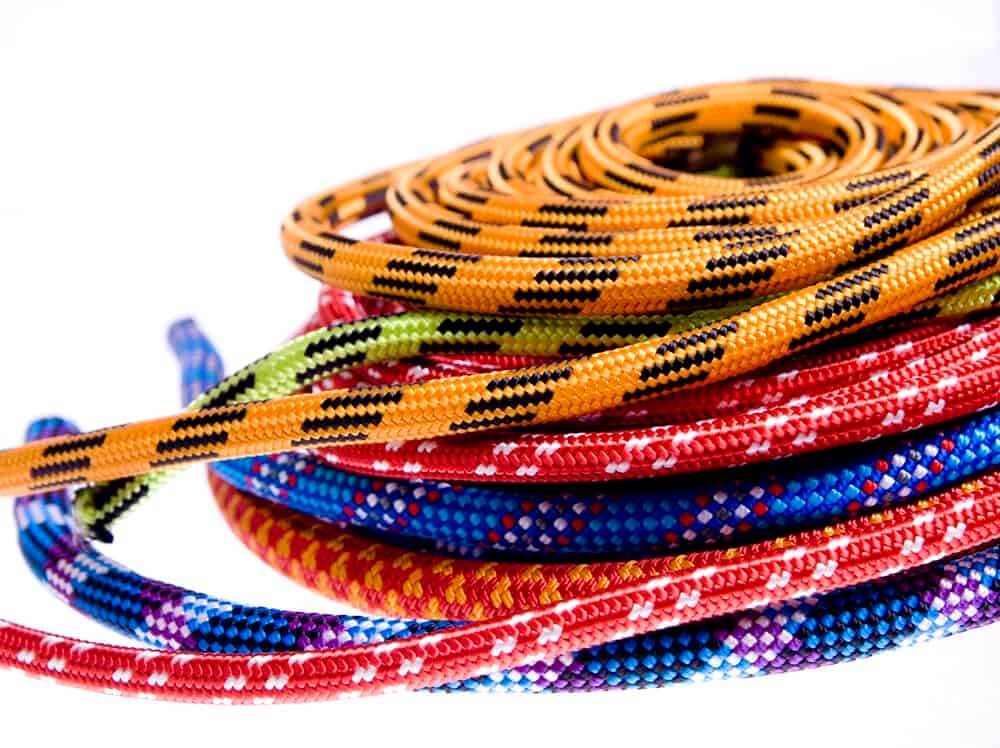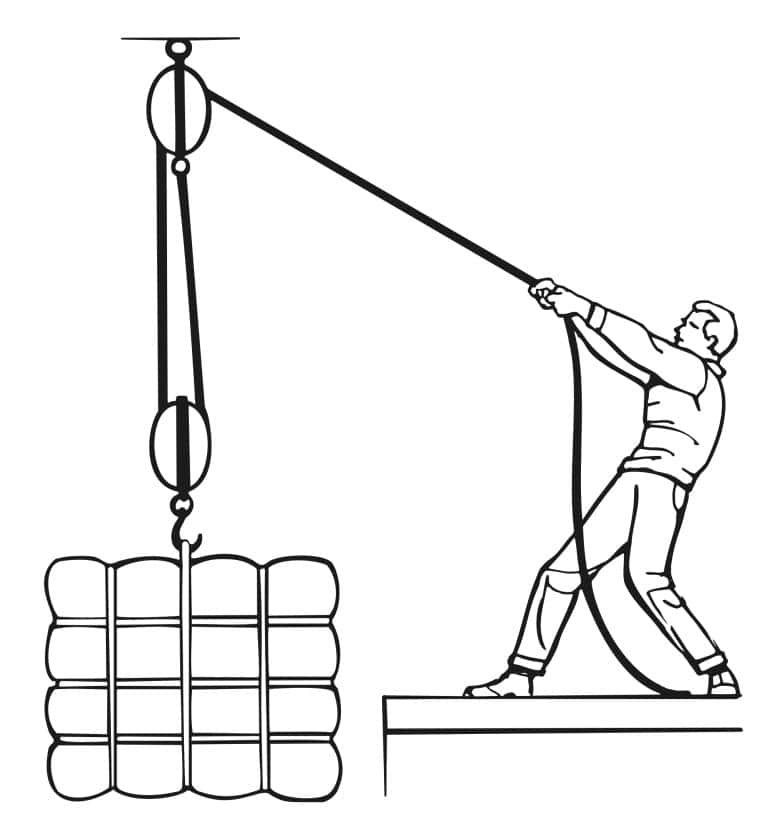Rope can be made using natural or synthetic materials and vary in strength and intended application.
For example, synthetic ropes tend to be stronger and more resistant to abrasion, and ropes made using natural fibers are better when used around animals and are better for the environment.
Knowing when and where to use the correct rope can be tricky.
So we’ve created this handy guide that will help you choose the best rope for knot holding, for strength, or for use with animals.
Here are 9 types of rope and their use – Manila, Polyester, Nylon, Cotton, Jute, Polyethylene, Polysteel, Sisal, Hemp.
Table of Contents
Manila
Manila rope is incredibly durable and resistant to saltwater damage due to its high natural resin content within the fibers.
It is a 100% natural fiber made from abacá plant leaves.
The rope shrinks when it becomes wet and has a 8-10 year life span.
Manila rope is also flexible and traditionally was used in ships’ lines and fishing nets.
However, it is used today in handicrafts such as weaves for baskets, hangings, and doormats.
In addition, manila rope is used to create carpets, clothing, and furniture items, such as weaved seat pads on chairs.
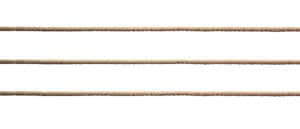
Polyester
Polyester rope is also known as Terylene, Dacron, or Trevira ropes and is commonly used for general industrial applications, fishing, and rigging.
Polyester is an artificial fiber created from petroleum products, air, and water.
It is thermoplastic which means that polyester can be melted and reformed.
Polyester rope is some of the most robust rope, making it ideal for safety applications.
In addition, it has excellent durability against natural elements and can be treated to resist wear from ultraviolet (UV) light.
Polyester rope retains its strength when wet and does not shrink.
As a result, it is most commonly used in marine applications, such as tying down boats, anchor lines, fishing lines, and fishing nets.
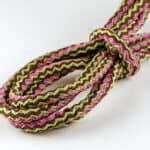
Nylon
Nylon rope is a polyamide, and like polyester, it is made from petroleum products.
The difference is that nylon creation results from high pressure and high heat reaction of the carbon-based chemicals found in coal and petroleum.
Nylon rope is one of the most versatile ropes available, mainly due to the rope’s unique shock absorption capabilities.
It is also highly resistant to abrasion and UV resistance, ideal for various applications.
Some of the most common uses for nylon rope are for pulling or towing, where a rope needs to absorb a dynamic load without stretching or snapping.
However, nylon rope is also great for use in pulley systems or in applications where significant friction is encountered on the rope.
The most common uses for nylon rope are for pulling or towing, where a rope needs to absorb a dynamic load without stretching or snapping then return to its original shape.
However, nylon rope is also great for pulley systems or applications where significant friction is placed on the rope.
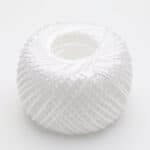
Cotton
Cotton rope is perhaps the most diverse rope used in various industries, from weddings to fishing and decorative crafts.
Cotton rope is made from 100% cotton and is biodegradable, heat resistant, and better for the environment compared to other ropes.
The cotton plant is called the Gossypium hirsutum.
In addition, cotton rope is a natural fiber and can be easily dyed or painted.
Cotton rope is the rope of choice in non-safety regulated uses such as decorative rope or the garden, tent ropes, and hammocks.
However, cotton rope is also widely used in the fashion industry in everything from hoodie neck chords to wedding dresses.

Jute
Jute is commonly called twine, and its composition is coarse strands that weave together to make the rope and offer an incredibly high tensile strength.
Jute rope is made using natural materials and is one of the oldest ropes still used today.
It comes from the bark of the Corchorus capsularis plant or white jute plant.
Everything from rugs to straps and lighting covers is made from jute.
It is used in agriculture, industrial, food, and laundry industries to bundle large objects together.
In addition, jute rope is very cheap to make and readily available in virtually any hardware store, making it an excellent choice for household DIY applications such as hanging pictures, tying, and lashing objects.
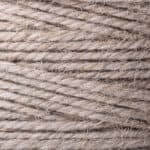
Polyethylene
Polyethylene is a synthetic resin that is tough, light, and flexible.
This resin is what plastic bags and food containers are made from, as is polyethylene rope.
The rope is made from a three-strand weave and is available in various colors and sizes.
It is resistant to abrasion, UV, and rot and is incredibly water-resistant.
Polyethylene rope also floats in water and retains its shape when wet, making it an ideal choice for outdoor parks, golf courses, and marine applications, fishing, sailing, sports, and construction industries.

Polysteel
Polysteel rope is made from a twisted three-strand rope and is one of the strongest ropes on this list.
Polysteel rope is made from high tenacity polysteel fibers and is strong, hardwearing, resistant to abrasion and UV.
It is 30% stronger than polypropylene rope.
In addition, polysteel rope is waterproof and floats in water, making it ideal for use in marine areas.
Due to the high strength and resistance to rot and wear and tear, polysteel rope is used in fishing and marine industries, sailing, industrial uses, and construction.
However, as polysteel has high tensile strength, it is unsuitable for pulling or towing applications.
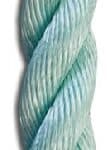
Sisal
Sisal has excellent knot holding properties due to the 3-strand cordage construction of the rope.
Sisal rope is natural fibers from the agave sisalana plant grown in Mexico and South America.
Sisal rope is not as strong as other natural fibers and synthetic ropes on this list but has a coarse feel, making it ideal for various uses.
Sisal absorbs water quickly, shrinks, and wears quicker than other ropes when utilized outdoors.
Jute and sisal look the same color-wise, and both can be dyed however the feeling of sisal rope is rougher comparatively.
Traditionally, the shipping industry used sisal rope for mooring boats and small crafts due to its excellent knot holding characteristics.
Nowadays, agriculture, industrial applications, construction, nursery, and gardening applications utilize sisal rope.
Sisal products include carpets for the back door, dart boards, and household twine.
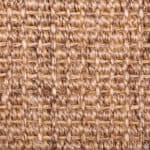
Hemp
Hemp rope is 100% natural hemp fibers from the bark of the Cannabis sativa plant.
Hemp rope is eco-friendly and does not harm the environment when it breaks down.
Due to their strength and flexibility, hemp ropes are considered robust ropes for climbing, fishing, mooring marine craft, farming, and harnessing horses and other livestock.
Hemp rope is also UV resistant and resistant to most chemicals absorbed by other ropes made of natural fibers.
As a result, you’ll find hemp rope used in everything from gym equipment, sewing, camping, fishing, farming, interior design, or pet toys.
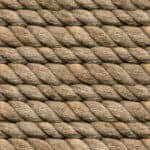
Life Span of Rope
How long a rope will last is dependent on the environment and circumstances in which the rope is utilized.
Sisal rope, for example, has on average a life span of 10 years.
However, if sisal is used outdoors in wet weather, that ten-year life span could be reduced to 90 days as the rope will absorb water quickly and wear quicker than other ropes.
It is always good to regularly check on the rope’s condition, looking for signs of wear and tear, cuts, unraveling, and color change, which are good indicators of its life span.
If you find signs of wear — well, as the saying goes, “your rope is at the end of its rope.”
Below is a rope chart showing the predicted life span of each type of rope in ideal conditions.
ROPE CHART
| ROPE | CONTENT | USE | LIFESPAN |
|---|---|---|---|
| MANILA | 100% natural fibre from abacá plant leaves 5high natural resin content. Resists salt water, has a high natural resin content, strongest natural fiber rope available | ship lines / fishing nets/weaving | 8 years |
| POLYESTER | 100% synthetic plastic – UV and water resistant and retains strength and dimension when wet | marine applications | 2 years |
| NYLON | 100% synthetic polyamides – UV and abrasion resistant, strongest rope of all ropes | towing, pulley systems | 10 years |
| JUTE | 100 % natural fibers from the white jute plant. Has high tensile strength. | household twine to tie, hang light objects | 10 years |
| POLYETHYLENE | 100 % synthetic Polyethylene -Abrasion, UV, and rot resistant. | marine, outdoor projects | 10 years |
| POLYSTEEL | 100 % Polysteel – High tensile strength, resists rot and wear and tear. | marine, outdoor projects that do not require pulling or towing | 10 years |
| SISAL | 100 % fiber of the agave sisalana plant. Excellent knot holding characteristics | carpets, dartboards, household twine | 10 years |
| HEMP | 100 % fiber of the bark of Cannabis sativa plant. UV resistant and resistant to most chemicals | gym equipment, sewing, camping, fishing, farming, interior design, pet toys | 5 years |
Ropes are created from various materials – from natural rope threads such as cotton or hemp to super-strong synthetic ropes such as nylon or polyethylene.
A rope’s material will indicate its intended uses, with synthetic ropes and multi-material construction ropes like polysteel rope being the strongest with the greatest tensile strength.
Other ropes such as cotton rope or sisal offer a biodegradable option that’s robust and better for use with livestock or animals.

